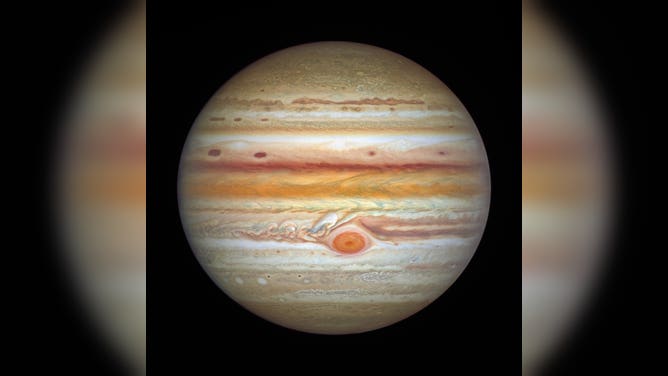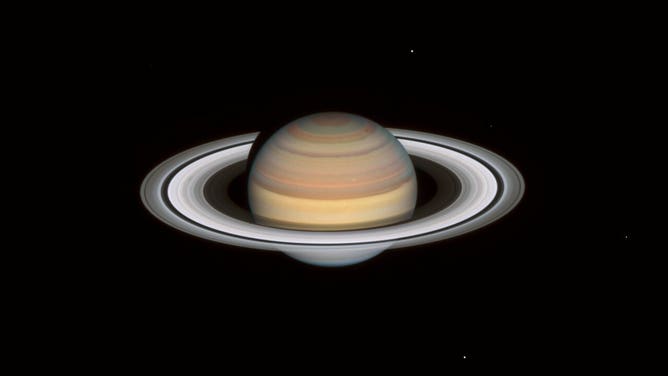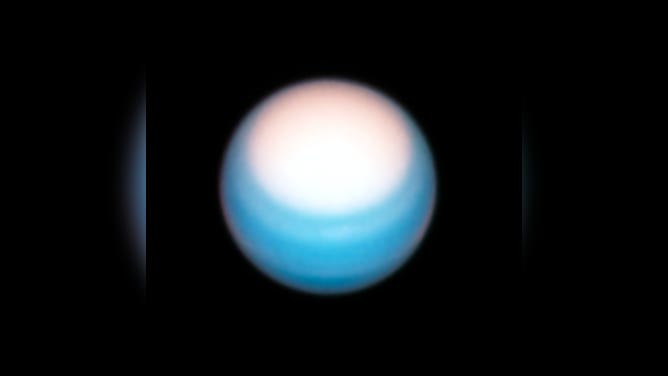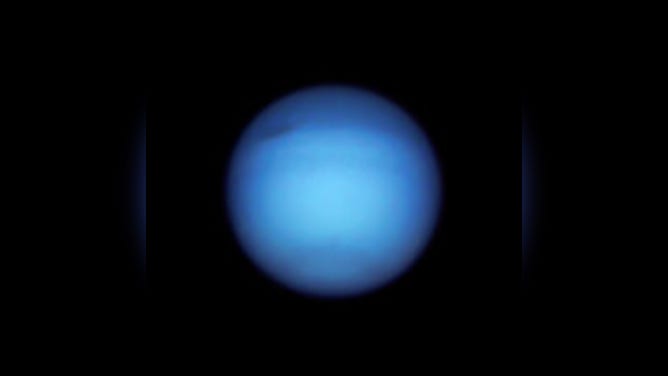Hubble takes family photo of solar system's giant planets
Researchers are tracking changes in the outer most planets
In a yearly review, the Hubble Space Telescope photographed the solar system's giant planets, and the images are stunning.
This week, the European Space Agency released the photos showing Hubble's "Grand tour of the outer solar system." ESA and NASA co-manage the Hubble Space Telescope made famous for its beautiful images of the solar system, galaxies, nebula and star formations.
The giant planets include Jupiter, Saturn, Uranus and Neptune, all 30 times the distance from the sun to Earth.
Unlike terrestrial planets like Earth, these worlds are close to the sun and offer some of the most interesting compositions and wild weather.
"Fulfilling the role of a weather forecaster, every time Hubble’s sharp cameras revisit these worlds, there are new surprises, offering fresh insights into their wild weather, driven by still largely unknown dynamics taking place under the cloud tops," according to the ESA.
Photos of the giant planets taken by Hubble and other spacecraft show these worlds are ever-changing. As part of the Outer Planets Atmospheres Legacy, or OPAL, program, maps of the outer planets are taken every year to look for changes in the weather.
Jupiter's swirling storms

Hubble’s 2021 image of Jupiter tracks the ever-changing landscape of its turbulent atmosphere, where several new storms are making their mark and the planet’s equator has changed color yet again. Image Credit: NASA, ESA, A. Simon (Goddard Space Flight Center), and M.H. Wong (University of California, Berkeley) and the OPAL team
(NASA, ESA, OPAL team)
Hubble took this photo on Sept. 4. According to ESA researchers, it shows new storms in the form of red cells are forming, and the planet's equator is a deeper orange.
Researchers also noted the winds of Jupiter's Red Spot Jr. are speeding up.
"While the equator has departed from its traditional white or beige appearance for a few years now, scientists were surprised to find a deeper orange in Hubble’s recent imaging, where they were expecting the zone to cloud up again," according to the ESA release.
Saturn's changing bands

Hubble’s new look at Saturn on September 12, 2021 shows rapid and extreme color changes in the bands in the planet’s northern hemisphere, where it is now early autumn.
(NASA/ESA)
Saturn's photo was taken on Sept. 12. Researchers said they noticed "rapid and extreme color changes" in the bands on Saturn's northern hemisphere. They also observed signs of winter because of the lingering blue tint in the south pole.
Uranus brightens in springtime

Hubble’s October 25, 2021 view of Uranus puts the planet’s bright northern polar hood in the spotlight. (Image credit: NASA, ESA, A. Simon (Goddard Space Flight Center), and M.H. Wong (University of California, Berkeley) and the OPAL team)
On Oct. 25, Hubble photographed Uranus during springtime in the northern hemisphere. According to ESA, the increase in ultraviolet radiation from the sun is causing the polar regions to brighten.
"Researchers aren’t sure why," the ESA wrote. "It could be a change in the opacity of atmospheric methane or some variation in the aerosol particles. Curiously, even as the atmospheric hood gets brighter, the sharp southernmost boundary remains at the same latitude."
Neptune's dark spot reverses direction

Neptune seen in Hubble observations taken on September 7 2021. Credit: NASA, ESA, A. Simon (Goddard Space Flight Center), and M.H. Wong (University of California, Berkeley) and the OPAL team.
(NASA/ESA/OPAL team)
Neptune's photograph taken by Hubble on Sept. 7 shows Neptune's dark spot recently changed directions, moving toward the equator.
Researchers also noticed a circle encompassing the south pole.
Neptune and Uranus are both blue because of their methane-rich atmospheres absorbing red light.